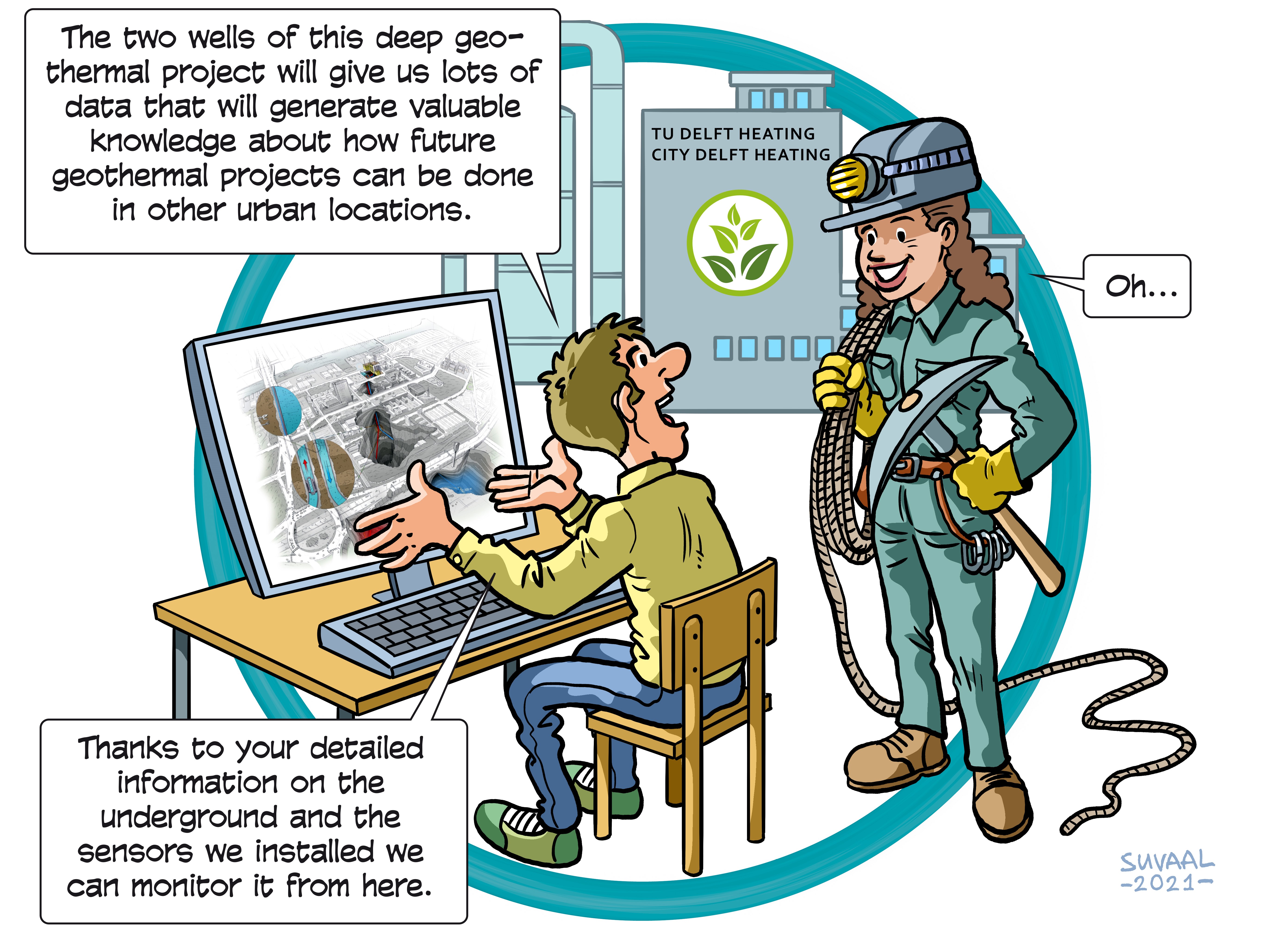Campus Geothermal Well
Research Theme: Energy


A TRL is a measure to indicate the matureness of a developing technology. When an innovative idea is discovered it is often not directly suitable for application. Usually such novel idea is subjected to further experimentation, testing and prototyping before it can be implemented. The image below shows how to read TRL’s to categorise the innovative ideas.
Summary of the project
Geothermal energy is a fairly well developed technology but there are still many unknowns and subsequent research questions. The construction of a deep geothermal well at the campus serves two purposes: 1. to do further in depth research into geothermal energy and 2. to supply part of the buildings with low carbon (geothermal) heat. This deep geothermal project will have two wells of 2 to 2.5 km deep – a so-called doublet. Hundreds of meters of rock samples will be collected during the drilling allowing scientists a peek into the Delft subsurface. The walls of the wells will be lined with different materials transforming them essentially into a plumbing system to transport warm water upwards (“producer”) and cool water downwards (“injector”). Each of the wells will be fitted with a lot of sensors over the complete length of the wells and in monitoring stations at the surface. Through the sensors the researchers can gather data on how the wells – and the materials they are made of – interact with the environment and the different layers of rock in the subsurface, in particular in the reservoir. The data collected during the operation of the geothermal well on the TU Delft campus will allow us to better understand the Delft geothermal system and geothermal systems in general giving us the opportunity to make efficiency and longevity gains for this and future projects. The fact that this project will be constructed in an urban environment with such a high level of level of monitoring instrumentation makes this project unique. This will generate valuable knowledge about how future geothermal projects can be done in other urban locations.
What's next?
The first measurements of movements in the subsurface are being done to understand what is happening in the underground before the project is started and operated. In addition, the heating system on campus is being modified so it can be used with geothermal heat. The current plan is to start installing the wells in 2022. There are a lot of remaining research questions that the researchers want to address with this project on site and several PhD projects are underway. A subsequent step is to look into high temperature heat storage so that heat that is brought to the surface when it is not needed, i.e. during the summer, can be stored to be used at an another moment in time (e.g., in winter).
Contribution to the Energy transition?
Heating and cooling are around 50% of all energy use, and geothermal energy is an important low carbon heat source. It possesses higher temperature than many other low carbon sources and therefore can be easily used in current buildings. Part of the Dutch mission for the energy transition is to create more geothermal wells. To better understand such systems will allow more efficient and more reliable use of the geothermal resource, without unwanted impacts. Geothermal energy has the potential to contribute several tens of percent of the heat demand, and will need to be constructed and operated in urban environments to effectively deliver heat to where it is demanded.
dr.Phil Vardon
prof.dr. David Bruhn
dr. Susanne Laumann
dr. ir. Guy Drijkoningen
prof. dr. ir. Evert Slob
dr. Maren Brehme
dr. ir. Deyan Draganov
dr. Lora Armstrong
dr. Auke Barnhoorn
dr. Denis Voskov
dr. Tobias Schmiedel
dr. ir. Martin Bloemendal
prof. dr. ir. Kees Wapenaar
dr. Hemmo Abels
prof. dr. ir. Jan Dirk Jansen
dr. Kees Weemstra
TU Delft Campus Real Estate
Hydreco Geomec
EBN
Shell Geothermal
Faculties involved
- CiTG
